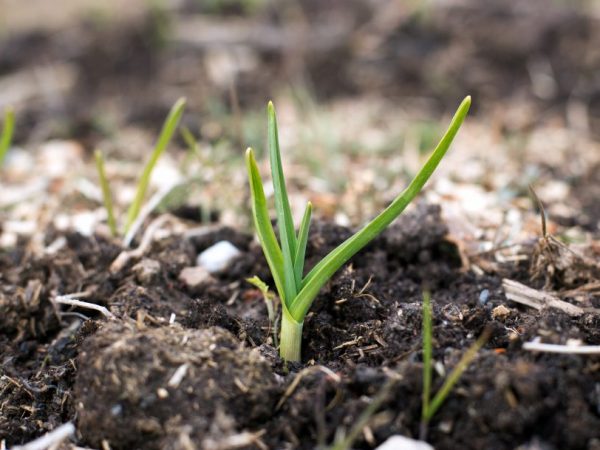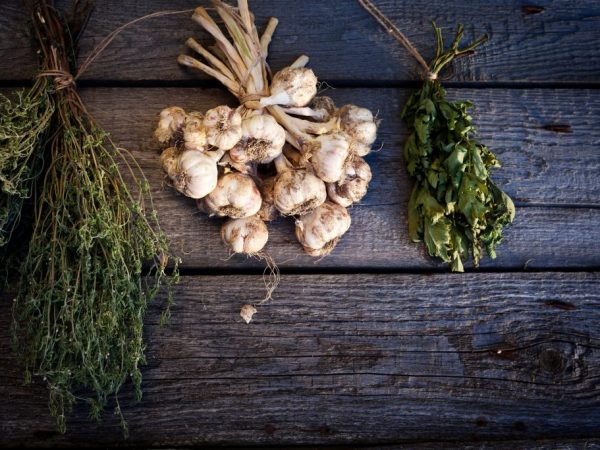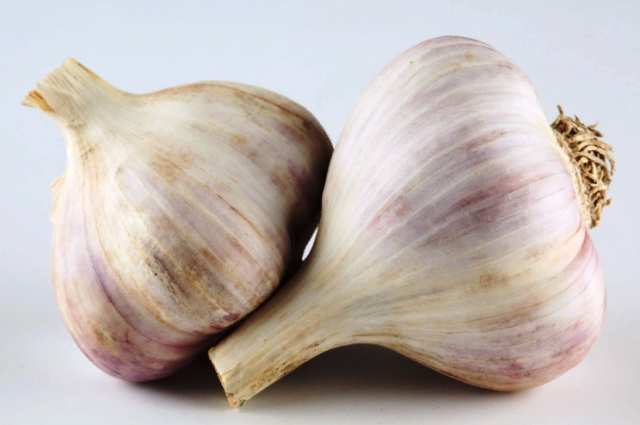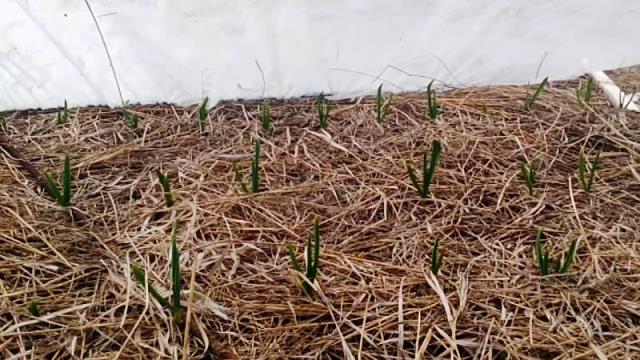Content:
With the arrival of spring, the first shoots of winter garlic appear. To get a good harvest, it is important to properly care for it.
Early season care
The first thing to do after the snow melts is to free the beds from the covering material so that the soil warms up better and the roots do not rip out. This work is performed when the soil dries up, or in the morning it will be slightly frozen so as not to walk in the mud.
With the onset of heat, it is important not to miss the period when the first opportunity to loosen the soil in the aisles with shoots to a depth of 5 centimeters appears. This will prevent the formation of a dry crust and cracks, and will not lead to the loss of valuable moisture formed after the snow melts.
If the winter was dry, thoroughly watered the soil with settled water. The beds can be mulched, this will help keep moisture longer. Subsequent care of plants consists of regular weeding, loosening, feeding and watering, treatments against pests and diseases.
Weeding and loosening
Winter garlic needs constant moisture saturation and air access to the roots. Be sure to loosen the beds after watering or rains. With each subsequent weeding, the depth of loosening should be deeper than the previous one. The heads grow and form at a depth of about 12 centimeters, they need to provide air exchange.
The weeds take the nutrients from the soil to make big heads. They are weeded out constantly, the bed must be clean of weeds.
Top dressing
For an enhanced set of green mass, garlic in the spring needs fertilizing with complex fertilizers containing nitrogen, potassium, phosphorus and other trace elements. When the first leaves appear, you need to feed. Dilute 10 grams of fertilizer in 10 liters of warm water and water the garlic beds. 3 liters of solution are poured per square meter. You can not exceed the proportion, violate the terms of introduction. This can lead to a negative result in which a green mass will be formed with damage to the head.
In the spring, carry out two dressings, the second two and a half weeks after the first (the third will be in summer). The following fertilizers are used:
- Ammonium nitrate - contains nitrogen, the norm is 15 grams per bucket of water, the interval between dressings is 20 days.
- Urea is nitrogen-containing, the rate is 1 teaspoon per 5 liters, the interval is 2 - 2.5 weeks.
- Ash - contains potassium and phosphorus, for 10 liters of water 0.5 liter can of ash, leave for 24 hours.
- Yeast - rich in amino acids, dilute 200 grams in a liter of water, dilute in a bucket of water a day later, water at the root.
- Ammonia - 10 liters of 25 ml of the preparation, process on the leaves.
- Chicken droppings - dilute 0.5 liters of fermented droppings in a bucket of water, water at the root.
- Slurry - for 10 liters they take 1 liter of manure, dilute, water the beds.
Watering
Garlic is a moisture-loving plant, but it must not be waterlogged. The roots may suffer, the heads will begin to rot, and their keeping quality and taste will worsen. In moderately humid weather, water every 10 days. In dry times, watering is carried out every 5 days, it is recommended to pour one bucket of water per square meter.
Treatments for pests and diseases
For diseases and pests in the spring, wood ash, tobacco dust, saline solution (1 tbsp. Salt per bucket of water) are used. Plant immunity is increased with Epin, Zircon preparations, and the soil is watered with Phytosporin against fungi.
Proper spring care of winter garlic, supported by efforts and care, contributes to obtaining a bountiful harvest with very large heads of garlic, rich in vitamins and minerals.

















